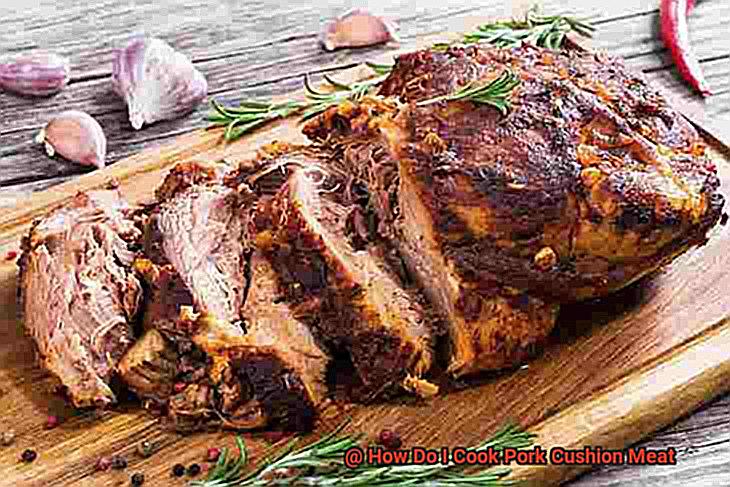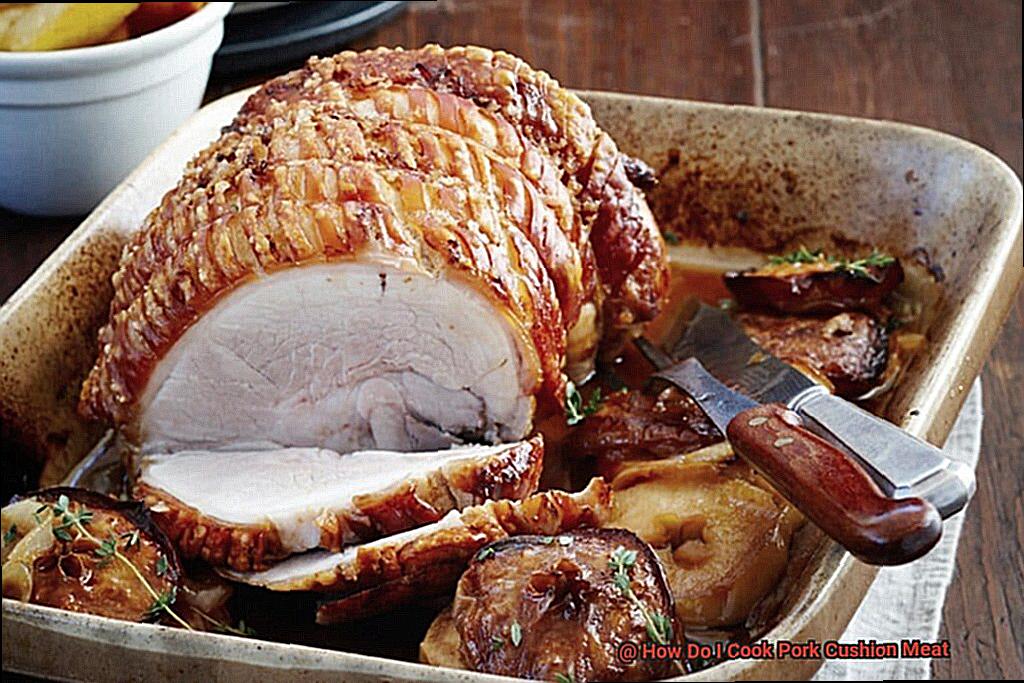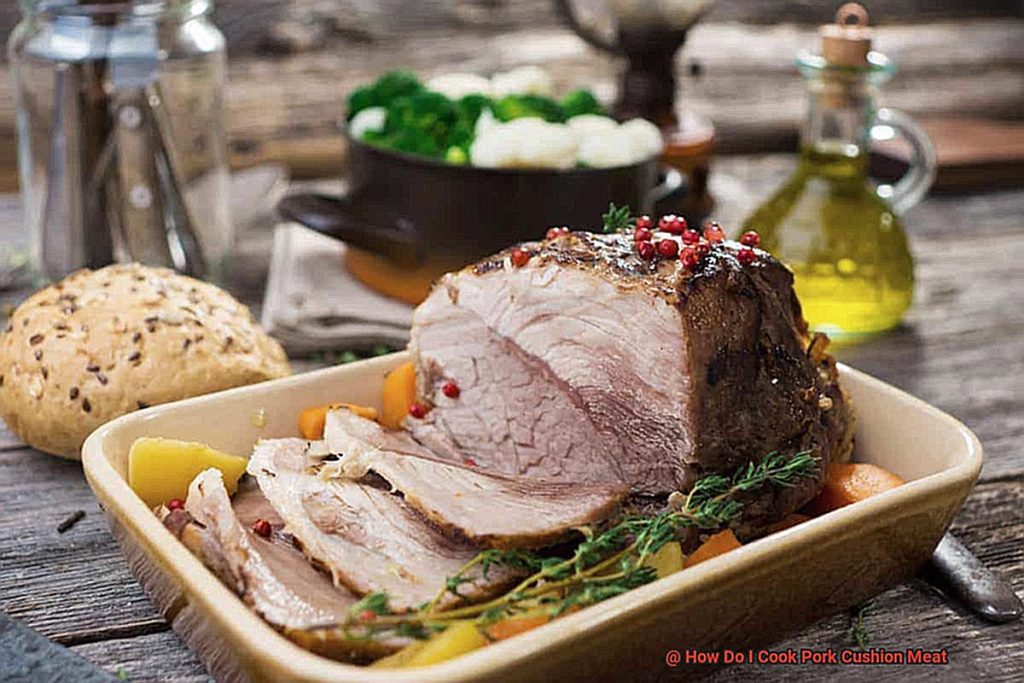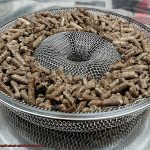Are you tired of cooking the same old pork cuts and want to try something new? Look no further than pork cushion meat. This juicy and flavorful cut is perfect for any occasion, whether it’s a family dinner or a backyard BBQ. But how do you cook it to perfection?
Let’s start by talking about what exactly pork cushion meat is. This cut comes from the shoulder area of the pig and is known for its tender texture and marbled fat, which gives it that mouth-watering flavor we all crave. You may also hear it referred to as pork shoulder blade steak or Boston butt.
Now, onto the important part: cooking. One of the best ways to cook pork cushion meat is to slow-cook it in a crockpot or instant pot. The low and slow cooking method allows the meat to become incredibly tender, while also infusing it with delicious flavors. If you’re looking for a smoky taste, grilling this cut is an excellent option that will give your meat a crispy exterior and an irresistible aroma.
But don’t worry if you don’t have these appliances at home because there are many other ways to cook this versatile cut too. Roasting in the oven with your favorite spices and herbs is another great option, or even frying it up in a pan for a quick and easy meal.
No matter how you choose to prepare it, pork cushion meat is sure to be a crowd-pleaser at your next meal. So why not switch things up and give this delicious cut a try? Head over to your local grocery store, pick up some pork cushion meat, and get ready to impress your taste buds.
Contents
What is Pork Cushion Meat?

Look no further than pork cushion meat, also known as pork shoulder butt or Boston butt. This rectangular-shaped cut comes from the shoulder area of the pig and is typically boneless with a layer of fat on one side. Don’t let its toughness fool you – pork cushion meat makes up for it with its rich flavor and versatility in cooking methods.
Pork cushion meat is a great choice for those who want to enjoy a delicious meal without breaking the bank. Compared to other cuts like tenderloin or ribeye, it’s relatively inexpensive. But don’t let the low price tag fool you – this cut has a good balance of flavor and tenderness when cooked properly.
When purchasing pork cushion meat, look for a cut that has good marbling and a layer of fat on one side. This will ensure that the meat stays moist and flavorful during cooking. Additionally, choose meat that is bright pink in color with no grayish-brown spots.
Now that you’ve got your pork cushion meat, it’s time to start cooking. Here are some popular cooking methods:
- Grilling: Preheat your grill to medium-high heat, season the meat with your favorite dry rub or marinade, and cook for 10-15 minutes per side until the internal temperature reaches 145 degrees Fahrenheit.
- Smoking: Preheat your smoker to 225 degrees Fahrenheit, season the meat with a dry rub, and smoke for 4-5 hours until the internal temperature reaches 145 degrees Fahrenheit.
- Roasting: Preheat your oven to 350 degrees Fahrenheit, season the meat with your favorite dry rub or marinade, and roast for 2-3 hours until the internal temperature reaches 145 degrees Fahrenheit.
- Braising: Sear the meat in a pan and then cook in a liquid such as broth or wine. This method takes longer but results in an incredibly flavorful and tender meat.
No matter how you choose to cook your pork cushion meat, remember to let it rest for at least 3 minutes before slicing and serving. This allows the juices to redistribute and results in a juicier and more flavorful meat.
Grilling Pork Cushion Meat
Look no further than pork cushion meat, also known as pork butt or Boston butt. This versatile and flavorful cut is perfect for the grill, and with the right preparation and cooking techniques, you can create a mouthwatering dish that will have your guests begging for seconds.
First things first, preparation is key. Trim any excess fat from the meat, leaving a thin layer for flavor and moisture. Then, season with your favorite dry rub or marinade. Whether it’s a spicy rub or a sweet marinade, this step is crucial for maximizing flavor and ensuring a succulent final product.
When it comes to grilling pork cushion meat, indirect heat is the way to go. Place the meat on one side of the grill while the heat source is on the other side. This allows for slower cooking and more even heat distribution. Aim for a grill temperature between 225-250 degrees Fahrenheit.
Timing is everything when it comes to grilling pork cushion meat. To ensure that the meat is fully cooked and safe to eat, use a digital meat thermometer to monitor its internal temperature. The USDA recommends cooking pork to an internal temperature of 145 degrees Fahrenheit with a three-minute rest time before serving. By following these guidelines, you can guarantee that your meat will be juicy, tender, and perfectly cooked.
Looking to add some extra flavor and moisture? Try basting the meat with a mixture of apple cider vinegar and apple juice during the final stages of cooking. This will create a sweet and tangy glaze that enhances the natural flavors of the pork.
Once your meat is fully cooked, let it rest for 10-15 minutes before slicing or shredding. This crucial step allows the juices to redistribute throughout the meat, creating an even more delicious final product.
Smoking Pork Cushion Meat
If you’re looking to elevate your pork-cooking game, smoking pork cushion meat is a must-try method. This tough cut of meat, also known as Boston butt or pork shoulder, requires slow cooking to become tender and juicy. Luckily, smoking is the perfect way to achieve succulent and flavorful results.
To start, you’ll need a smoker and some wood chips or pellets. Popular wood choices for smoking pork include hickory, apple, and mesquite. After trimming any excess fat from the meat and seasoning it with your desired rub or marinade, let it sit at room temperature for about an hour before placing it in the smoker.
Preheat your smoker to 225-250°F and add your wood chips or pellets according to the manufacturer’s instructions. Place the pork cushion meat on the smoker rack and let it smoke for 6-8 hours or until the internal temperature reaches 195°F. Depending on the size of your cut of meat, this may take some time – but trust us, it’s worth the wait.
Throughout the cooking process, it’s crucial to maintain a consistent temperature in your smoker. Using a meat thermometer can help you monitor the internal temperature of the pork cushion meat. Once it reaches the desired temperature, remove it from the smoker and let it rest for at least 30 minutes before slicing.
Smoked pork cushion meat is versatile and delicious. You can enjoy it on its own or use it in other recipes like pulled pork sandwiches or tacos. Don’t be afraid to experiment with different wood chips and seasonings to find your perfect flavor profile.
In summary, follow these steps to smoke pork cushion meat:
- Trim excess fat from the meat and season with desired rub or marinade
- Let the meat sit at room temperature for an hour before placing in smoker
- Preheat smoker to 225-250°F and add wood chips or pellets
- Smoke for 6-8 hours or until internal temperature reaches 195°F
- Maintain consistent temperature in smoker and use a meat thermometer to monitor internal temperature
- Let the meat rest for at least 30 minutes before slicing
Roasting Pork Cushion Meat
Look no further than roasting pork cushion meat. As an expert in this cooking method, I’m thrilled to share some top tips for achieving succulent and flavorful results.
Start by preheating your oven to 350 degrees Fahrenheit. While it heats up, grab your pork cushion meat and place it in a roasting pan. It’s time to get creative with your spices and herbs. From garlic powder to onion powder, paprika, salt, and pepper – add your favorite seasonings to give the meat a delicious flavor profile.
For added moisture, pour some liquid into the bottom of the roasting pan. You can use water, broth, or even apple cider for extra taste. This liquid will keep the meat moist while it cooks in the oven.
Cover the roasting pan with foil and place it in the oven for approximately 2-2.5 hours or until the internal temperature reaches 145 degrees Fahrenheit. The slow cooking process will ensure that your pork cushion meat is tender and juicy.
Once fully cooked, take out the roasting pan from the oven and let it rest for 10-15 minutes before slicing and serving. This resting time allows the juices to spread evenly throughout the meat, resulting in an even more tender and juicy final product.
Roasted pork cushion meat pairs perfectly with a variety of sides such as roasted vegetables, mashed potatoes, or a fresh salad. It’s simple and easy to prepare, yet impressive enough to make any dinner party a hit.
Braising Pork Cushion Meat
Look no further than braising pork cushion meat. This cut, known for its tenderness and juiciness, is perfect for braising – a slow cooking method where the meat is cooked in liquid until it becomes tender and full of flavor.
To begin, you’ll need a Dutch oven or heavy pot with a lid, as well as some liquid. Water, broth, wine, or a combination of these can be used, along with aromatics like onions, garlic, carrots, and celery to enhance the flavor. Don’t forget to season your pork cushion meat with salt and pepper.
Start by heating up some oil in your Dutch oven over medium-high heat. Once hot, sear your pork cushion meat on all sides until browned. This step is essential for creating a beautiful crust on the meat and developing its flavors.

Next, add your liquids and aromatics to the pot. The liquid should come up about halfway up the sides of the meat. Cover the pot with a lid and bring everything to a simmer.
Lower the heat to low and let the meat cook for several hours until it becomes tender and can be easily shredded with a fork. This slow cooking method allows the meat to absorb all of the delicious flavors from the liquid and aromatics.
Once your pork cushion meat is cooked to perfection, remove it from the pot and let it rest for a few minutes before slicing or shredding it. You can also use the cooking liquid to make a sauce or gravy to serve with the pork.
Braising pork cushion meat is not only delicious but also versatile. It can be served as a main dish or used in other recipes such as tacos or sandwiches. With just a little patience and some flavorful ingredients, you’ll be able to create a mouth-watering dish that will impress even the most discerning palates.
Internal Temperature for Cooking Pork Cushion Meat
One of the most critical factors to consider when cooking pork cushion meat is the internal temperature. By achieving the recommended temperature of 145°F (63°C), you can guarantee that any harmful bacteria are eliminated, ensuring your dish is safe to eat.
To achieve this perfect internal temperature, it’s essential to use a meat thermometer. This handy tool allows you to check the temperature accurately by inserting it into the thickest part of the meat, making sure not to touch any bone. Once you’ve hit the recommended temperature, it’s important to let the meat rest for a few minutes before serving. This step ensures that the juices distribute evenly throughout the meat, giving you a juicy and flavorful result.
It’s worth noting that while 145°F (63°C) is the recommended temperature for cooking pork cushion meat, you can adjust this based on your personal preferences. However, it’s crucial not to undercook or overcook the meat as this can affect both taste and safety.
Undercooked pork cushion meat can put your health at risk, while overcooked meat results in a dry and tough texture. Therefore, it’s essential to monitor the internal temperature closely and adjust heat levels accordingly to achieve your desired level of doneness.
Other Tips for Cooking Pork Cushion Meat
If you want to take your pork cushion meat from average to extraordinary, consider these tips and tricks. They’ll help you create a succulent and flavorful dish that will leave your guests wanting more.
Marinating your pork cushion meat is an essential step towards achieving a tender and juicy final product. A marinade not only infuses the meat with flavor but also helps to break down its tough fibers. You can use a variety of marinades, from citrus-based to soy sauce-based, or even beer-based. Let the meat marinate for at least 4 hours, or better yet, overnight in the refrigerator.
Searing your pork cushion meat before roasting or grilling is another important technique that will enhance its flavor profile. Heat up a cast iron skillet over high heat, add some oil, and sear the pork cushion meat on all sides until it is browned. This process locks in the juices and creates a crispy crust on the outside of the meat.
When grilling pork cushion meat, it’s essential to use indirect heat. Preheat one side of your grill on high heat and leave the other side off. Place the pork cushion meat on the cooler side of the grill and close the lid. Cook for about 20-30 minutes per pound, or until its internal temperature reaches 145°F.
Allowing your pork cushion meat to rest is critical for creating a moist and tender dish. After removing it from heat, let it rest for at least 10 minutes before slicing or serving. This allows the juices to redistribute throughout the meat, resulting in a much more flavorful and enjoyable eating experience.
Conclusion
In conclusion, pork cushion meat is a culinary gem that can be transformed into a succulent and flavorful dish with the right cooking techniques. Whether you opt to grill, smoke, roast, or braise it, the secret to achieving mouth-watering results lies in being patient and paying attention to detail.
To start off on the right foot, select a high-quality cut of pork cushion meat with marbling and a layer of fat for maximum flavor and moisture. Make sure to monitor its internal temperature using a reliable meat thermometer to ensure it’s cooked all the way through.
But why settle for just average when you can turn your pork cushion meat into an extraordinary feast? Marinating the meat before cooking can infuse it with additional flavors while searing it adds an irresistible crust. Using indirect heat when grilling will keep your meat juicy and tender while letting it rest after cooking allows the juices to redistribute evenly throughout.






